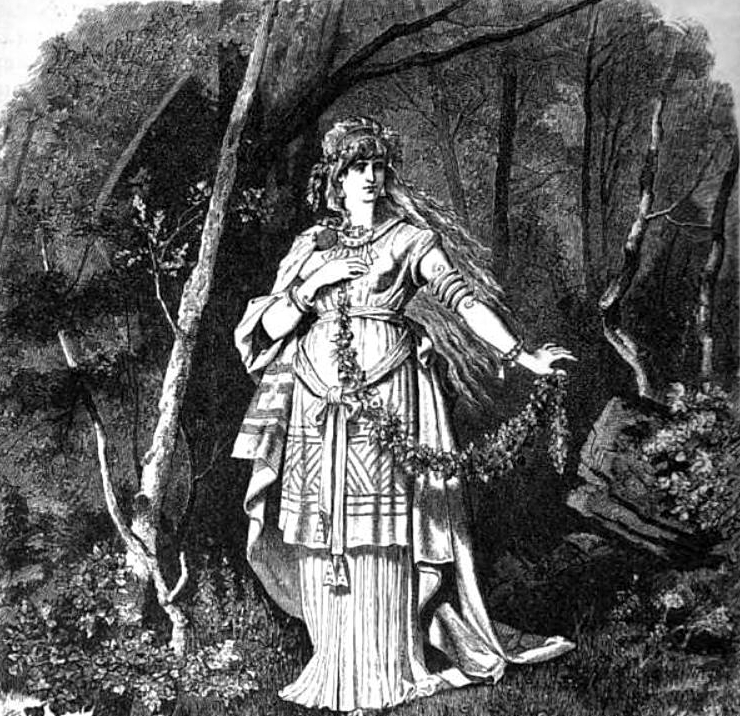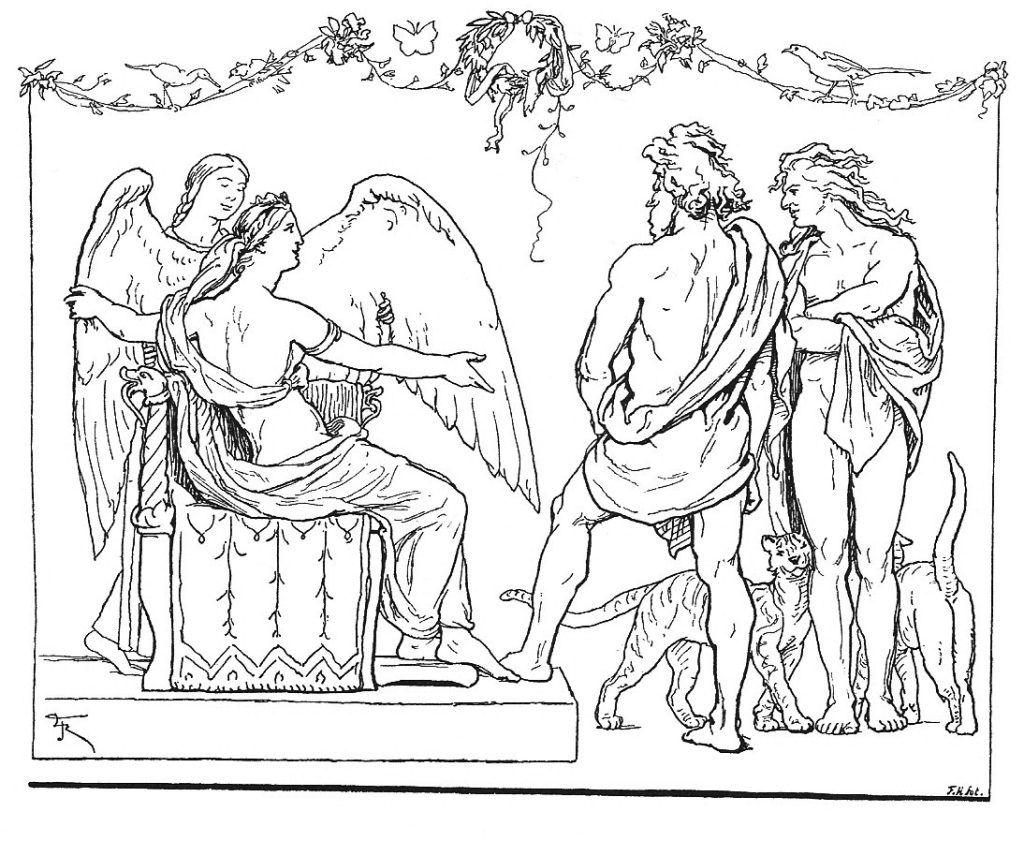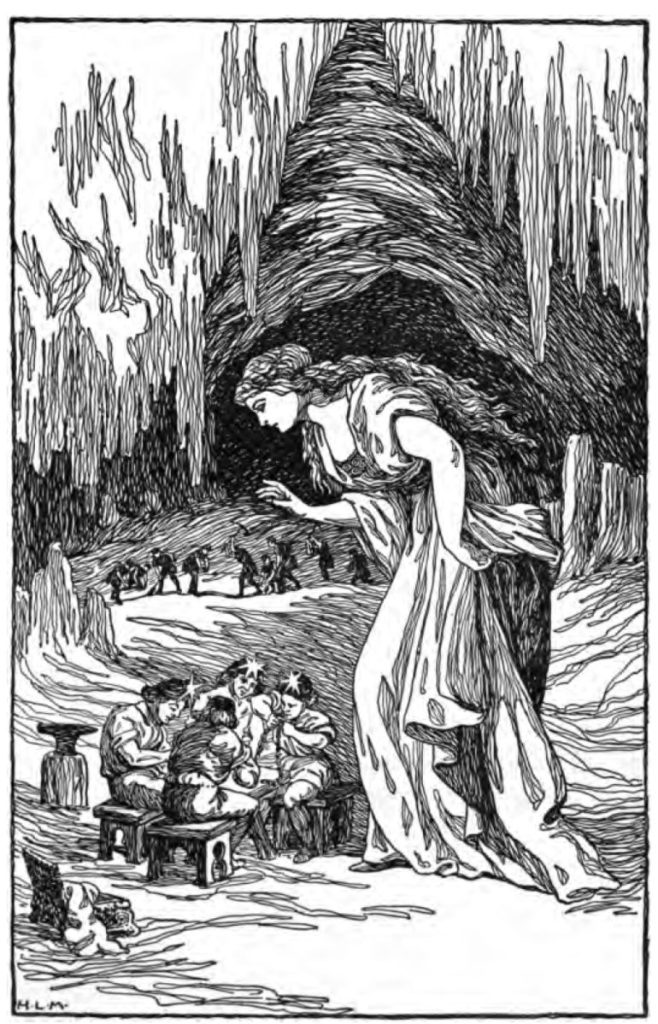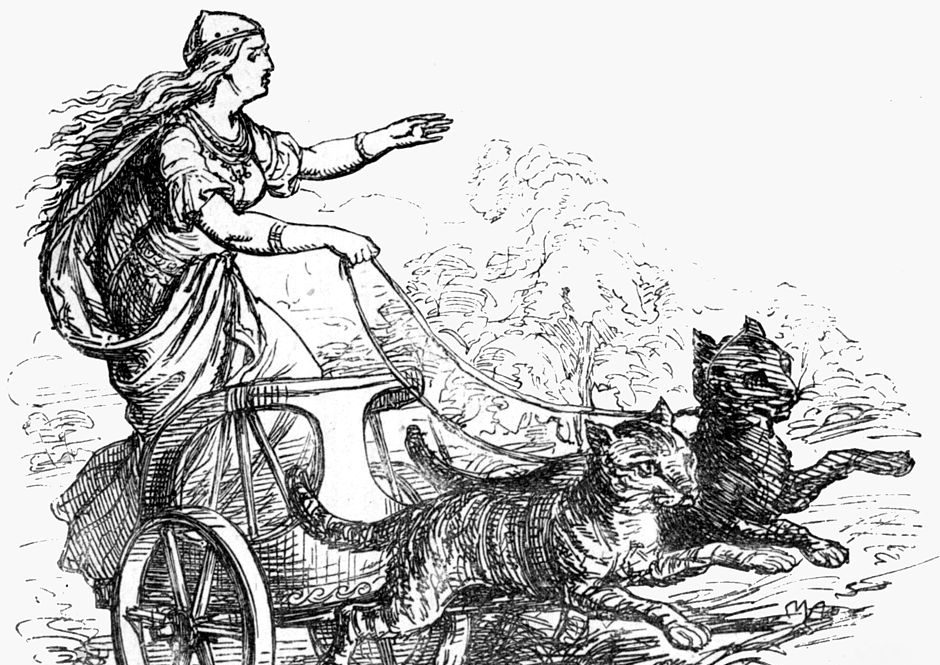Freyja, or Freya, from Vanaheim, is the most famous goddess in Viking society. She is the masterful practitioner of a magic called seiðr and the Norse goddess of love, fertility, beauty, sex, gold, and war. She is the daughter of Njord, also a Vanir god.
Of What Is Freya the Goddess?
According to Norse cosmology, Vanaheim and its gods had associations with soothsaying, fertility, magic, and wisdom, as opposed to Asgard, which was the realm of war and power.
Consequently, Freyja’s powers are gentler and more related to agriculture, magic, and love.
Freyja’s Family Tree
Father: Njord
Freyja’s father is the Vanir god Njord. Njord lives in Nóatún (Old Norse: Njörðr; meaning: “ship-enclosure”). According to the Gylfaginning section of the 13th-century collection of Norse tales by the Islandic politician, historian, and poet Snorri Sturluson, Nóatún is a port located “in Heaven.”
Texts identify Njord with the sea and seafaring, the winds, wealth, and crop fertility. He is also mentioned in the Poetic Edda, a series of poems compiled in the same century.
In another work by Sturluson, Njord appears as a beloved mythological early king of Sweden in Heimskringla, a book of tales about Norwegian and Swedish kings.
Abundant harvests, peace, and prosperity characterized Njord’s reign, so much so that the people believed he could control crops and wealth. His body was burnt in tribute by the Swedes when he died, and there was great mourning.
Brother: Freyr
Freyja’s twin brother is Freyr. He succeeds his father as king, is also well-loved, and presides over more good harvests. Proof of Freyr’s association with fertility is evident when you see many of his images feature a large phallus.
The gods made Freyr ruler of the elf kingdom, Alfheim. He rides the shining boar Gullinbursti, created by dwarves, and he owns the ship Skíðblaðnir, described as the finest vessel ever constructed. Skíðblaðnir always finds good winds and can fold away into a bag when necessary!
Freyr falls in love with the jötunn Gerðr after she lits up the entire world on their first meeting. However, to become her husband, he has to relinquish his magic sword, which could wield itself if the user was wise enough. Freyr has to fight the jötunn Beli without the sword but kills him with an antler.
The prophecy of Ragnarök decrees that Surtr will kill Freyr during this end of days.
Mother: Unknown
Freya’s mother is unknown, but the more ancient Germanic goddess Nerthus also has semantic connections with Njord. The name Nerthus resembles the feminine form of Njord used around the year one of the Common Era (or 1 AD).
Sources suggest this relationship may indicate an association between Njord and Nerthus, such as brother and sister. Therefore, Nerthus could be the unnamed sister who bears Freyja and Freyr, with Njord as the father.
Husband and Daughters
Freyja had two daughters with her husband, Óðr: Gersemi and Hnoss.
Is Freyja Good or Evil?
Freyja can be considered a good goddess.
As we have read earlier, Freyja’s powers are gentle and related to agriculture, magic, and love.
Texts sometimes mention her as the goddess of lust, but that is the most “extreme” practice with which she is associated.

What Are Freyja’s Symbols?
Neil Price, an English archaeologist, specializing in Viking Age Scandinavia, mentions that Thor presented Freyja with two cats which she uses to pull her chariot. Freyja has a boar called Hildisvíni.
You will often see images or paintings of her wearing the fire necklace or torc, Brisingamen. Freyja also owns a fjaðrhamr, or cloak of falcon feathers.
Freyja And the Norse Magic Seiðr
The best-known völva (sorcerer, seeress, or soothsayer), Freyja, practiced a form of Norse magic called seiðr, which has associations with effeminacy, something some Asgardians found worthy of mockery. Loki mocks Odin in Lokasenna (Poetic Edda poem) for his use of it.
While Æsir magic tended to be powerful in a warlike way, the Vanir and seiðr way was softer and more specialized.
After the culmination of the Æsir and Vanir war, a truce decreed an exchange of hostages, with Freyja being one of the Vanir gods and goddesses sent to live in Asgard.
Although, as you will read below, there was some resentment towards her use of seiðr when in Asgard, the supreme god Odin was the keenest to learn the new way despite its feminine associations.
Freyja In Norse Mythology Literature
Freyja and her brother Freyr accompany their father to live in Asgard as a part of the accords after the Æsir-Vanir War. These accords banish certain Vanir from living in Asgard in exchange for several Æsir moving to Vanaheim.
Poetic Edda Attestations
Þrymskviða
The poem Þrymskviða tells the story of how Thor lost his hammer, Mjölnir, and the subsequent quest to retrieve it from Þrymr, king of the jötnar.
The trickster god Loki borrowed Freyja’s cloak of falcon feathers, so he could fly to Jotunheim and locate the hammer. However, Þrymr would only return the hammer in return for Freyja’s hand in marriage. This request angered Freyja – her rage shook the halls of the Æsir, and Brisingamen fell from her neck.
Heimdall suggested that Thor simply disguised himself as the goddess – earning the praise of the gods and comparisons with the wise Vanir. Thor agrees to this suggestion and borrows Brísingamen as part of Freyja’s outfit when he travels to the “wedding” in Jotunheim.
Lokasenna
Loki mocked Freyja about her dubious parentage during verbal exchanges with Njord in the poem Lokasenna (Loki’s verbal jousts).
That is harmless if,
The Poetic Edda – Page 90
besides a husband,
a woman has
a lover or someone else;
what is surprising is a pervert god coming in here,
who has borne children
Völuspá
Although many sources suggest the character Heiðr was Freyja, some argue the völva reciting the following poem was referring to herself. The translation of Heiðr in Old Norse can be “bright” or “honor.”
A stanza from Völuspá also called her a witch while she discussed the war between the Æsir and the Vanir:
Heith, they named her
The Norse Gods and Their Myths – Page 49
who sought their home,
The wide-seeing witch,
in magic wise;
Minds she bewitched
her magic moved that,
To evil women
a joy she was.
Hyndluljóð
Freyja appears again in the Poetic Edda in the Hyndluljóð. Heiðr may be an alias of the witch Gullveig, mentioned in the previous stanza.
Óttar (or Óttar the Simple) was a protégé of Freyja and appeared in the poem Hyndluljóð. Óttar completely devoted himself to the goddess and built a hörgr or shrine to her.

Prose Edda Attestations
Heimdall also rescued Freyja’s necklace, Brisingamen, from Loki after a fight in which the two transformed into seals.
The Prose Edda features a stanza from Húsdrápa by Úlfr Uggason:
Renowned defender of the powers’ way,
The Hall at Hjardarholt – Germanic Mythology
kind of counsel,
competes with Farbauti’s terribly sly son at Singastein.
Son of eight mothers plus one,
might of mood,
is first to possess the beautiful sea kidney.
I announce it in strands of praise.
The “renowned defender” was Heimdall, and the “powers’ way” referred to the Bifrost. The sea kidney was the necklace called Brisingamen.
Freyja’s home and ship also appeared in the Prose Edda. Sessrúmnir was a ship and the name of her hall in Fólkvangr.
There, Freyja received half of any warriors who died in battle (the other half went to Valhalla). This responsibility might have indicated a connection between Freyja and the Valkyries.
The Heimskringla
Odin (or Óðinn) and Freyja featured together in three excerpts from Heimskringla (written around 1220 and translated as “Orb of the World”). The Islandic politician, historian, and poet Snorri Sturluson wrote Heimskringla, a collection of tales about early Norwegian kings.
In chapter 4, Odin appointed Freyja, Njord, and Freyr as priests of sacrificial offerings, and they became gods among the Æsir. In the tale, Njord married his unnamed sister while still a Vanir, and the couple produced Freyr and Freyja. However, the Æsir prohibited this custom, and Odin annulled the marriage.
We also learn more about Freyja’s husband, Óðr. Óðr liked to wander so much that Freyja gave herself the name Mardöll (or “she who shines over the sea”) whenever she went out searching for her husband.
Freyja’s other aliases included Hörn, Gefn, and Syr.

Sörla þáttr
A possible origin story of Brisingamen, Freyja’s necklace, appears in the Sörla þáttr, a short story by priests Jon Thordson and Magnus Thorhalson from the late 14th century.
Freyja desired a golden necklace forged by four dwarves. She tried to buy it with gold and silver, but they would only part with it if she spent one night with each of them. Freyja held her part of the bargain and obtained the necklace.
Unfortunately, Loki discovered the agreement and informed Odin. Loki transformed himself into a fly and stole it on Odin’s orders.
Odin and Freyja knew one another as she was a favorite concubine of his. Freyja realized Odin had stolen the necklace and went to him to ask for its return.
Odin set Freyja the task of making two armies fight an eternal pagan battle that could only “christened men” brave enough to intervene and slay both sides could end. Under the spell, king Högni and king Heðinn’s forces fought for 143 years as every time a soldier was killed; he would come back to life and continue fighting.
Finally, Christianity arrived in the form of King Olaf Tryggvason and his forces as they entered the battlefield and killed the undying soldiers, thus completing Odin’s challenge.

